Intel Announces Kaby Lake-X Processors: High-End Desktop Getting the Latest Microarchitecture
by Ian Cutress & Anton Shilov on May 30, 2017 3:02 AM EST- Posted in
- CPUs
- Intel
- Kaby Lake
- Computex 2017
- X299
- Kaby Lake-X
- i7-7740X
- i7-7640X
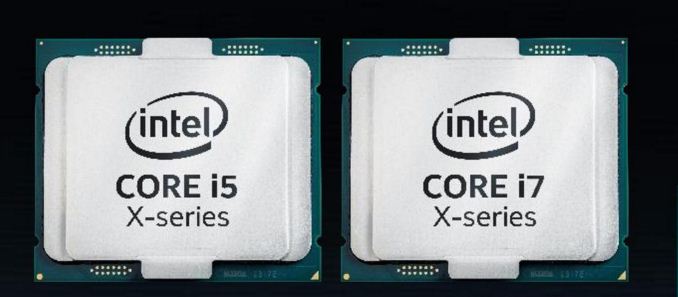
Anyone following the high-end desktop space lately will have realized that we’ve recently been tripping up over information on upcoming platforms. Intel’s successor to Broadwell-E has been expected for some time, and today Intel is announcing the new platform, Basin Falls (using the X299 chipset), as well as two new processor families: Skylake-X and Kaby Lake-X.
Normally we expect to see each generation of Intel’s HEDT platform be a generation behind the mainstream parts: Sandy Bridge-E was launched when Ivy Bridge was mainstream, Broadwell-E was launched when Skylake was mainstream and so on. There was always a delay in cadence, given that these HEDT CPUs, which are derived from the enterprise CPUs, required more time to qualify but also as a market segmentation strategy.
Today’s announcement starts with Skylake-X, the new set of processors to replace the previous generation Broadwell-E parts. The twist to the announcement today is that Intel will also launch the latest generation microarchitecture on the HEDT platform. So rather than being a generation behind in microarchitecture, Intel will bring a pair of processor families forward for HEDT with Skylake-X and Kaby Lake-X.
The rub of this is that these new processors, the ones based on the latest microarchitecture, are actually physically the same as the consumer parts. They are quad-core components, using the same 4+2 silicon, but with a higher power budget by disabling the integrated graphics. This means higher frequencies and more performance, albeit at the steep end of the power/performance curve. If a user wants the absolute ultimate in single threaded performance on the high-end desktop platform, then these CPUs are designed to be the center point of your design decision. Depending on your perspective, this can be a good thing – a new peak processor for single thread performance, or a side-step compared to what a high-end desktop platform should be bringing.
| Intel Kaby Lake Processors | ||||
| Core i7 | Core i5 | |||
| Core i7-7740X | Core i7-7700K | Core i5-7640X | Core i5-7600K | |
| Socket | LGA2066 | LGA1151 | LGA2066 | LGA1151 |
| Cores/Threads | 4/8 | 4/8 | 4/4 | 4/4 |
| Base Frequency | 4.3 GHz | 4.2 GHz | 4.0 GHz | 3.8 GHz |
| Turbo Frequency | 4.5 GHz | 4.4 GHz | 4.2 GHz | 4.2 GHz |
| TDP | 112 W | 91 W | 112 W | 91 W |
| L2 Cache | 256 KB/core | |||
| L3 Cache | 8 MB | 6 MB | ||
| DRAM Channels | 2 | |||
| DRAM Support | DDR4-2666 | DDR4-2400 | DDR4-2666 | DDR4-2400 |
| Graphics | None | HD 620 | None | HD 620 |
| Price | $339 | $242 | ||
| Launched | Soon | Jan 2017 | Soon | Jan 2017 |
The two Kaby Lake-X processors are the Core i7-7740X and the Core i5-7640X. Intel is differentiating them from the K versions of the same processors, and thus being part of the X299/LGA2066 Basin Falls platform, with the X in the name. X CPUs for X chipsets. Both of these processors will be quad-core parts, and thus be the lowest core counts out of the set. Like the consumer parts, these will have only sixteen PCIe lanes, as well as dual channel memory. This makes choosing an X299 motherboard, which also has to support processors with quad-channel memory and 44 PCIe lanes, difficult (see our coverage of X299 for a deeper explanation).
We are expecting the silicon in Kaby Lake-X to be identical to Kaby Lake-S, which in Intel’s nomenclature means a 4+2 arrangement (four cores with GT2 graphics). What separates the two is that Kaby Lake-X will have its graphics fused off, which means unused silicon but also allows the IGP to no longer be a draw on the power available to the processor. The other difference will be in the power delivery – Kaby Lake-X design specifications for motherboard manufacturers supports more voltage pins and larger voltage pathways, which should help with power delivery.
If we directly compare the Kaby Lake-S and Kaby-Lake X specifications, two things stand out. First, the official support for higher grade memory: DDR4-2666, over the DDR4-2400 on the consumer platform. Second is the twining of frequency and TDP: for the Core i7-7740X, we get +100 MHz on the base frequency and +100 MHz on the turbo frequency, but the TDP increases from 91W to 112W, or a 21W increase for 100 MHz. I know at this point we are at a bad part of the power/performance curve, but such a jump in rating seems overly excessive. It is likely that the chip will do essentially the same 91W, but if there’s a particularly bad piece of silicon that passes the test, it might go up that high. The Core i5-7640X is in a similar predicament, with the comparison to the Core i5-7600K yielding a +200 MHz to the base frequency but not a lot else for the same power jump. If we were running on specification sheet alone, both processors would perform worse in the performance per watt and afford more cost due to being part of the X299 platform, with more expensive motherboards and such.
A word on pricing. The numbers above are listed as 1K pricing, or tray pricing, for OEMs that want to buy processors in batches of 1000. For individual units, especially ones with an air heat sink, the retail pricing should be another 5-10% on top of this. So the Core i7-7740X is listed here as $339, the same as the Core i7-7700K for tray pricing and expected to be $350 at retail. The Core i5-7640X is listed as $242, again the same as the Core i5-7600K, and thus should be on shelves for $259 or so.
So Who is Kaby Lake-X for, Exactly?
We have our theories, but the official line from Intel is in the name of ‘more choice’ and ‘overclockability’:
The two Kaby Lake quad core processors were introduced for broader expandability of the platform. The Intel® Core i5-7640X and Intel® Core i7-7740X enable customers to invest in a more powerful enthusiast platform that provides more headroom and scalability up the X-Series stack when they are ready. These two processors will start with a slightly higher base frequency and provide all of the ingredients, like higher memory speed and larger socket, for better overclocking performance compared to their mainstream counterparts. That said, our Intel Core i7-7700K and the S-line are still great options and by introducing the X-series we’re giving a wide variety of consumers the benefit of choice.

Intel is promoting its own brand liquid coolers for Kaby Lake-X
The more choice line is neither here nor there – more choice is not always good choice, but someone will buy it. The overclocking element is something we can’t test by looking at specification sheets at an announcement event. The retail launch (and reviews) of these chips is not today, so even if we knew, we can’t comment. Could you argue that being part of the X299 platform gives the processor more potential to be clocked higher? It could be perhaps skewed that more control allows for better performance, but depending on the environment (such as the solder contact between the silicon and the heatspreader), if it is the same silicon then there might not be much in it, except for extreme overclockers.
So Who is Kaby Lake-X for, Really?
If it’s good at extreme overclocking, it’s a nod to that enthusiast community. Two other sets of users spring to mind: the high single-thread frequency, if that translates into daily overclocking, will work wonders for financial traders where every millisecond means money; but also in previous generations we used to see users invest a small amount in a platform and then go big on the CPU later: users who want X299 could invest in a quad core Kaby Lake-X processor today, and then go for a larger twelve core in 12-18 months. How big this market is, we’re not sure.
A Few Notes
Because Intel is launching Kaby Lake-X alongside Skylake-X, it is worth pointing out that there are some very big differences between the two aside from the core counts and pricing.
Kaby Lake-X has the same design, structure, and features as Kaby Lake-S. So this means access to the second generation of Speed Shift, but no ECC support. While Skylake-X supports AVX-512 extensions, Kaby Lake-X does not. While Skylake-X supports a new cache hierarchy, with an increased L2 and an adjusted L3, Kaby Lake-X does not.
The thing is, Intel is set to launch Kaby Lake-X processors with more than four cores at a later date. I would expect some of those processors to support the new Skylake-X features. Like Skylake-X, some of these will be Core i7 and some will be Core i9. So there will be a split in features between quad-core and more-than-quad-core Kaby Lake-X CPUs.
Confused yet?
Launch and Availability
Intel has its customary keynote as part of the Computex show, and we will be live blogging it. They are likely to announce dates and availability there, and we’ll update this piece as we know. (I’m still flying to Taipei, so there might be a delay.) We’re unsure when we’ll be sampled, but we expect to have a launch day review. It will be interesting to see where these parts sit in relation to Kaby Lake-S, or if it really does overclock.
Update On Overclocking
Finally, ASUS had a hush-hush overclocking event in Taiwan for their band of high-ranking overclockers (and Anton was allowed to attend). On the cards was overclocking with Liquid Helium, which runs at 4 degrees above absolute zero (-269C). Normally extreme overclockers play with Liquid Nitrogen, which sits around -176C, but by comparison is a lot cheaper. Liquid Helium costs about $5 a liter, and the tube to carry it from the tank to the copper pot (used on the CPU when sub-zero overclocking) costs around $5000. I won’t go into the ins and outs of extreme overclocking here, or the merits of such an endeavor (it’s an argument we’ve had before), but a few nuggets of information came out of the event.
Firstly, the professional overclockers managed 7557 MHz encoding stable, with all four cores (no hyperthreading), on Kaby Lake-X.
For comparison, Kaby Lake-S CPUs manage around 7100 MHz. The absolute world record frequency is around 8800 MHz, held by Andre Yang on an AMD FX-8350 processor, although the KBL-X CPU wins here with IPC.
Secondly, Kaby Lake-X uses a thermal interface paste, rather than an indium-tin solder that we have seen on HEDT processors in the past. This raises a number of points, such that extreme overclockers will have to delid to get the best out of the processor, but also it offers a mixed message from Intel. Intel is consistently saying that they’re for enthusiasts, and want to provide the best solutions available especially for the cutting edge of overclocking. Using a cheaper thermal paste over an indium-tin solder is one way so save 1 cent on a $350 CPU. Intel might argue that delidding a CPU is a common thing for extreme overclockers to do, and it makes little different to the majority of users who will buy the processors. That may be true, but it doesn’t show commitment. Does Intel need to show commitment? It depends on how strong they what their marketing message to be at the end of the day.
Anton's Report on the Event:
In a bid to demonstrate overclocking advantages of its new X299 platform as well as the Kaby Lake-X processor over “typical” Kaby Lake-S chips in LGA1151 packaging accompanies by the Z170/Z270 PCH, Intel and its partners organized “Performance Matters” event during Computex 2017. During the event, world’s renowned overclockers, including Der8auer, Dancop and Shamino attempted to set new records in KBL overclocking using liquid helium (LHe) cooling.
As Intel promised, the new CPUs in LGA2066 packaging outperformed processors with similar dies in LGA1151 form-factor. For example, Der8auer has managed to push the Core i7-7740X CPU to 7577.1 MHz with 1.99 Vcore with all four cores (sans Hyper-Threading) enabled. This is a noticeable improvement over Der8auer’s previous record set earlier this year, when he overclocked the Core i7-7700K to 7328.3 MHz (in 4C/8T config) on an ASUS Z270 motherboard under liquid helium. Both CPUs were delidded and their thermal interfaces were replaced with a new compound.
Keep in mind that when Der8auer overclocked his Core i7-7700K in January, he did it in a regular room with normal temperature and humidity. The “Performance Matter” event was held outside at 26°C – 27°C with high humidity, which somewhat handicapped the new Core i7-7740X. Without such a handicap, the results could have been better.
The almost 250 MHz difference between results demonstrated by KBL die in LGA1151 and LGA2066 packaging proves that the latter have a higher overclocking potential (assuming that we are dealing with cherry-picked processors that can handle high voltages, ultra-low temperatures, etc.). There are multiple reasons why the Kaby Lake-X outperform their regular counterparts: an improved power supply circuitry of the 2066-pin form-factor, fused-off iGPU (effectively increases dissipating die area), a larger PCB (that also dissipates heat and when it comes to extreme overclocking its dissipation matters, which is why professional overclockers put that much thermal paste on their CPUs) and somewhat better binning along with higher TDP.
From an end-user point of view, extreme LHe overclocking does not make a lot of sense – this is Formula 1 of computing and you don’t drive an F1 car to groceries. Meanwhile, the aforementioned 250 MHz difference clearly shows advantages of the Intel X299 platform over the Z270.


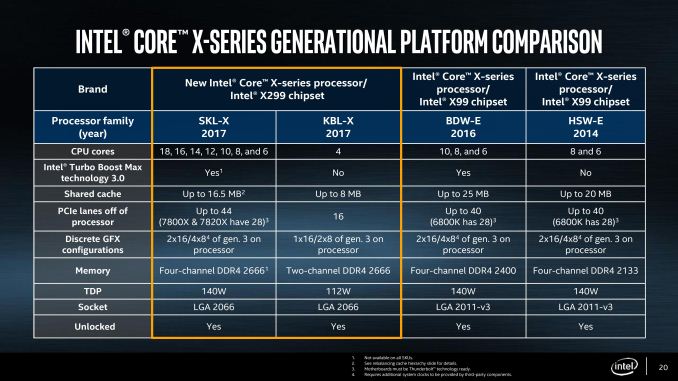
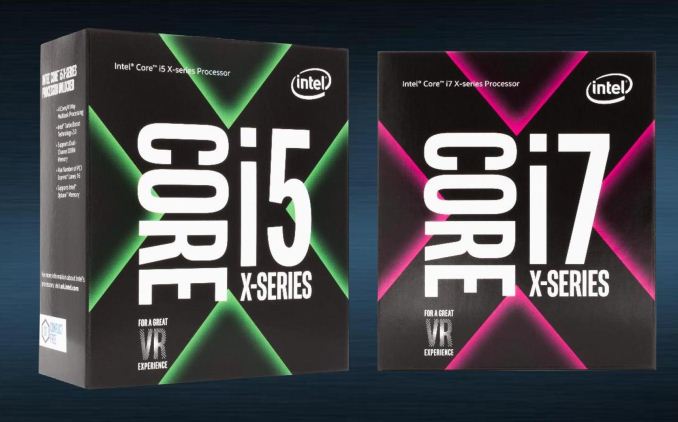






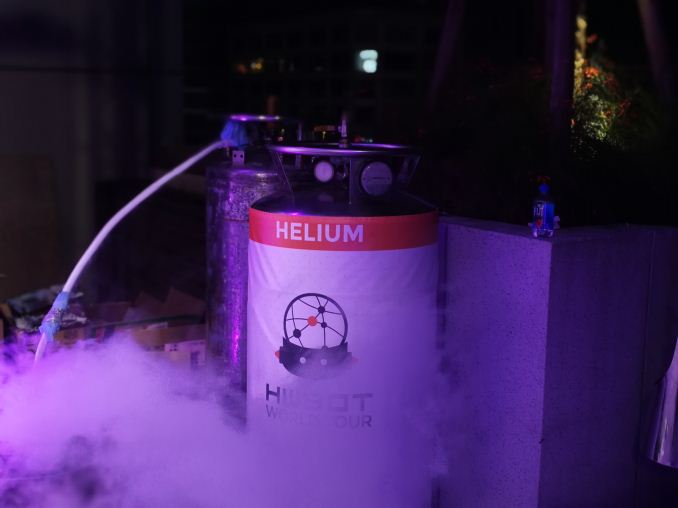
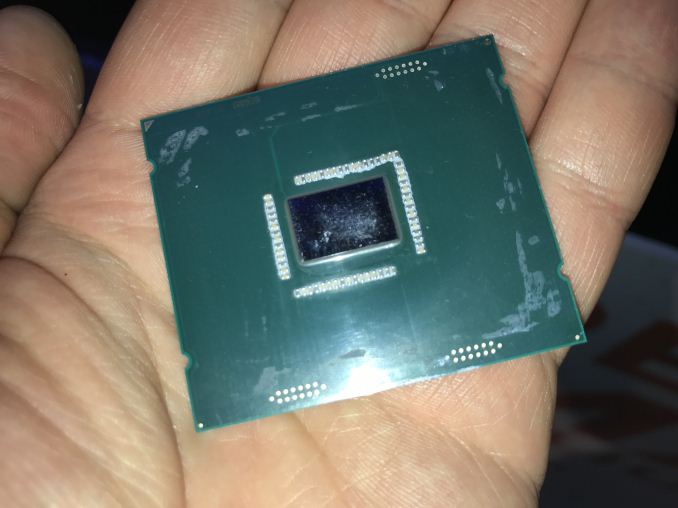
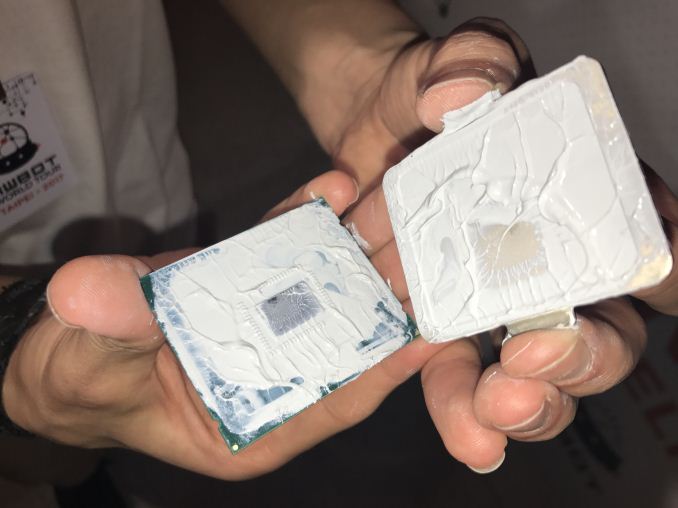








54 Comments
View All Comments
SkyDiver - Tuesday, May 30, 2017 - link
First comment. Isn't that what people do?Mo3tasm - Tuesday, May 30, 2017 - link
Not here!alamilla - Tuesday, May 30, 2017 - link
This isn't WCCFTechChaitanya - Tuesday, May 30, 2017 - link
milking spree to max.close - Tuesday, May 30, 2017 - link
If they wanted to prove overclockability they should have done it under more down to earth circumstances. I'm guessing they don't plan on selling 50 of them to the people who may at some point put them under liquid He.In the mean time the main benefit you get over a standard Skylake is 900 more pins for the same price. More is better right? Oh, and 20W extra for 100MHz even with the iGPU taken out of the equation.
Samus - Tuesday, May 30, 2017 - link
The only thing milky about this article is that someone nutted all over that CPU.RRoy - Tuesday, May 30, 2017 - link
Ok..thank You Intel for fast response but I will still buy AMD:)jjj - Tuesday, May 30, 2017 - link
The 6 core Skylake X renders Kaby Lake X utterly pointless.Meteor2 - Saturday, June 3, 2017 - link
KLX is the 'intro' to the range and a small modifications of the existing KL chips. I'm sure Intel would've liked a full KLX range but they can't do everything at once!christophermx4 - Tuesday, May 30, 2017 - link
I'd be much more curious about overclocking results with a normal AIO cooler..